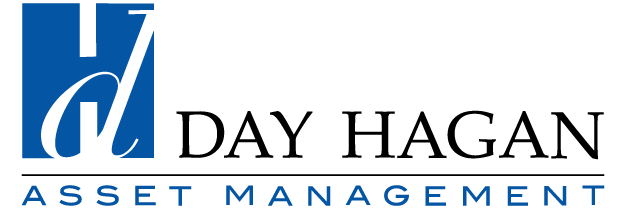Day Hagan Global Tactical Allocation Strategy
“The essence of investment management is the management of risks, not the management of returns. Well-managed portfolios start with this precept. “
—Benjamin Graham
A disciplined, time-tested approach to investing
Day Hagan Asset Management www.DayHagan.com and www.DHFunds.com utilize a quantitative framework to define asset allocation. Our proprietary models incorporate indicators and model composites developed in conjunction with Ned Davis Research. Day Hagan’s work mathematically evaluates business conditions, fundamentals, price trends, sentiment, economic trends, and valuation to determine the most attractive asset classes. Our quantitative models interpret these ever-changing market conditions and adjust the portfolio in accordance with the message of the models. The objective is to overweight areas with the greatest probability of success and underweight areas of weakness.
Day Hagan Believes That Successful Investing Is A Disciplined Process Of:
Understanding the markets quantitatively
Determining the appropriate mix of assets given this data
Allocating assets accordingly
The models seek to provide the flexibility to seize opportunities in the marketplace in a rational, model-based, unemotional manner. The first and most important decision is the allocation to stocks versus bonds. The allocation is further refined through exposure to U.S. Equity Styles and Classes, International Equities, Fixed Income Sectors, Precious Metals, Real Estate, Commodities, and Currencies. The strategy is implemented by utilizing Exchange Traded Funds (ETFs).
Being Prepared For All Market Cycles and Consistently Adjusting the Portfolio to Reflect Risk Versus Reward Opportunities.
Successful investing is a disciplined process of understanding the markets, determining the mix of assets that will work best at a given time, and allocating assets accordingly. Our models search for confirmation. When many diverse indicators provide a similar message, the probability of success is much higher. The models’ weight-of-the-evidence approach provides a historically-based perspective on current risks and rewards. Of course, past performance does not guarantee future success, and as with any strategy, there is no guarantee that the investment will achieve its goal.
Investing Philosophy
Make decisions based on an objective, model-based framework.
Utilize only time-tested and robust financial market indicators.
Allocate based on a weight-of-the-evidence approach.
Seek to stay on the right side of major trends by using trend-following indicators.
Day Hagan Asset Management does not rebalance to a fixed benchmark. We employ a tactical approach: moving toward areas we identify as strong and away from areas of weakness.
Tactically adjust the portfolio in an attempt to reflect prevailing financial conditions.
Allocation percentages are based on a composite of statistically-proven indicators that have historically identified the most attractive asset classes on a risk-adjusted basis.
Indicator categories include economic activity and trends, corporate fundamentals, consumer behavior and expectations, investor liquidity and money supply factors, valuations and degrees of safety, risk premiums, relative valuation and spread values, international activity, currency relationships, and facets of technical analysis.
Executive Team
Disclosures
All investment strategies have the potential for profit or loss. Different types of investments involve varying degrees of risk, and there can be no assurance that any specific investment or strategy will be suitable or profitable for a client’s portfolio. There is no assurance that the strategy will achieve its investment objectives.
ETF’s are subject to specific risks, depending on the nature of the underlying strategy of the fund. These risks could include liquidity risk, sector risk, as well as risks associated with fixed-income securities, real estate investments, and commodities, to name a few. Investments in underlying funds that own small and mid-capitalization companies may be more vulnerable than larger, more established organizations. Increased portfolio turnover may result in higher brokerage commissions, dealer mark-ups, and other transaction costs and may result in taxable capital gains. Past performance is no guarantee of future results.




